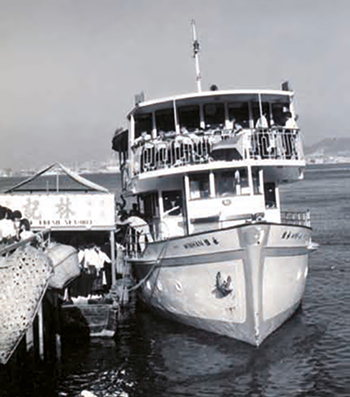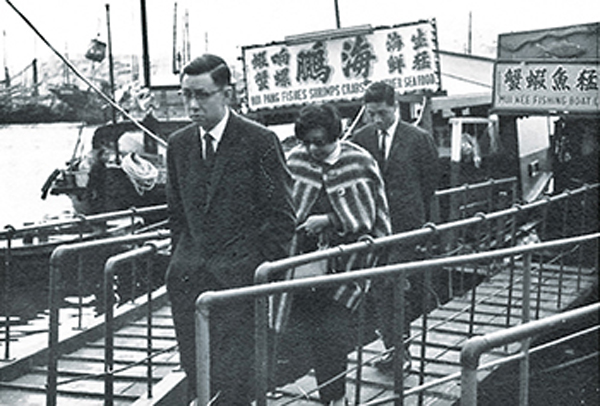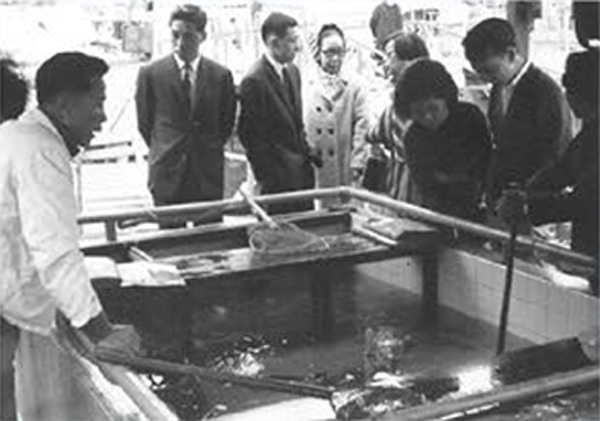Lei Yue Mun – Seafood Paradise
Early Eateries in Lei Yue Mun
In the late 19th century, the residents of Lei Yue Mun Village were primarily stonemasons and their families. Due to limited transportation, residents heavily relied on kaito ferries to travel between Shau Kei Wan, Kowloon City, Lei Yue Mun and Hang Hau. In the 1930s, to support Hong Kong's defense strategy, the British Army constructed a pier in Lei Yue Mun Village and employed many workers to strengthen military facilities in the village and Devil's Peak. This increase in population led to the development of the dining industry in Lei Yue Mun. In the 1940s, the earliest local tea houses, "Lok Wah Yuen" and "Ming Cheong Kui," not only provided traditional Hakka cakes and pastries to the villagers but also delivered the food to the boats moored in Chau Wan area.
Starting from the 1950s, various small eateries selling congee, rice, cakes and dessert began to emerge near the pier. As land transportation from Lei Yue Mun Village was still limited at the time, the ferries from Shau Kei Wan to Lei Yue Mun were crowded with passengers every afternoon and evening, resulting in a thriving business for these small eateries in the village. At the same time, fishmongers set up stalls on both sides of the pier for passersby to buy live seafood for cooking at the nearby tea houses, embarking the "seafood dining industry" in Lei Yue Mun.
 Ferry and floating fishing boat in 1960s
Ferry and floating fishing boat in 1960s(Photo Source: “Kwun Tong Chronicles”)
(Photo Source: “Kwun Tong Chronicles”)
Seafood Restaurants and Floating Fishing Boats
 Floating fishing boats and their customers in 1968
Floating fishing boats and their customers in 1968(Photo source: University of Hong Kong Library)
(Photo source: University of Hong Kong Library)
Entering the 1960s, Hong Kong's industrial development was booming and people’s consumption power was increasing. With the completion of industrial and residential developments in the areas from Kwun Tong to Yau Tong, there was an increase in the local population. Along with improved land and sea transportation connecting to Lei Yue Mun, many local visitors were attracted to visit Lei Yue Mun to enjoy seafood. In just a couple of years, many new restaurants opened in Lei Yue Mun and over a dozen of floating fishing boats appeared along the pier and Hoi Pong Road Central, allowing visitors to choose live fish, thereby enhancing their visiting experience.
Seafood Paradise
At the end of 1967, the Government implemented the policy of controlling explosives and small permit quarries, resulting in closure of all quarries in the area. Some quarry operators turned to running eateries or seafood restaurants and floating fishing boats selling seafood were transferred to land-based businesses. During the 1970s to the 1980s, many residential houses along Hoi Pong Road were transformed into land-based seafood shops or rebuilt into seafood restaurants. The number of seafood restaurants and seafood shops in the area increased to over twenty and thirty respectively. Lei Yue Mun seafood cuisine has gradually become internationally renowned, attracting many local and overseas visitors.
 Customers choosing seafood on a floating fishing boat in 1968
Customers choosing seafood on a floating fishing boat in 1968(Photo source: University of Hong Kong Library)
(Photo source: University of Hong Kong Library)